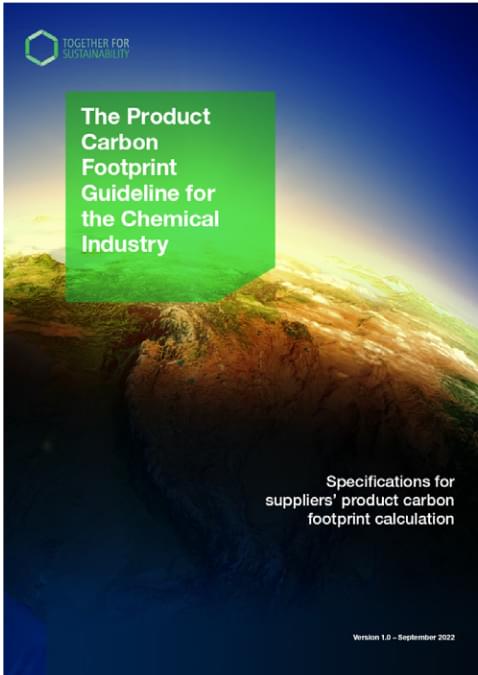
Product carbon footprint
helps enable a net zero future.
To reach the goals of the Paris Agreement, we all must progress forward on this journey to net zero.
The journey is not a straight line, and today, companies are at different points with different pathways to progress.
This guide summarizes common steps along the journey with links to resources that can support you, wherever you are in the process.
Starting
Advanced

Starting
Advanced
Let’s start with the basics.
Q
What is climate change?


Climate impact refers to the effect of human activities on the Earth’s climate system, primarily through the release of greenhouse gases (GHGs) such as carbon dioxide (CO2), methane (CH4), and nitrous oxide (N2O).
Q
What are the risks posed by climate change?


Climate change poses significant risks to ecosystems, communities, and economies worldwide, including extreme weather events, sea-level rise, and disruptions to agriculture and water resources.
Q
What is a carbon footprint?


A carbon footprint measures the total amount of GHG emissions, usually expressed in CO2-equivalents, associated with a particular activity, organization, product, or individual.
Q
Why does it matter?


Reducing GHG emissions and improving climate impact is important for companies to prepare for the future, as well as drive value creation. Consider potential cost savings from energy efficiency and waste reduction; the ability to better manage risks from regulatory changes or supply chain disruptions; and potential for innovation and new market opportunities; in addition to stakeholder engagement and trust.

Starting
Advanced
Engage your stakeholders
Identify who you need to help manage and measure climate impacts.
Collaboration may include your operations team, engineers, HSE, sustainability, or others.

Engage internal stakeholders by highlighting the risks and opportunities associated with climate change and benefits of reducing GHG emissions.

Starting
Advanced
Measure your company’s GHG emissions
Conduct a GHG emissions inventory across Scope 1, Scope 2, and Scope 3 using established methodologies like the Greenhouse Gas Protocol.
This may mean working cross-functionally in the company, and you might need an external specialist to help. Explore the diagram below by clicking on the headings of each of the Scope 1, 2 or 3 emissions:
Scope 1
Direct GHG emissions that occur from sources that are owned or controlled by the reporting organization, such as emissions from the combustion of fuels in onsite equipment (boilers, furnaces, vehicles), emissions from chemical processes, and fugitive emissions (e.g., leaks) from equipment.
Scope 2
Indirect GHG emissions associated with the generation of electricity, heat, or steam purchased or consumed by the reporting organization, such as electricity from a local utility.
Scope 3
Indirect GHG emissions that occur in the value chain, including both upstream and downstream activities. These emissions can come from purchased goods and services, transportation and distribution, or use of sold products, for example, and are defined by “categories.” Scope 3 emissions from the value chain are challenging, and you’ll want to identify the most important impacts.

Starting
Advanced
Look at the product level
While Scope 1, 2, and 3 applies emissions data to a company, product carbon footprint converts emissions data into a unit of a specific physical product, telling us the GHG emissions that went into the product from start to finish, with the boundaries clearly noted.


TfS PCF Guideline
The TfS PCF guideline provides specific calculation instructions for “cradle-to-gate” PCFs for chemical manufacturers. It harmonizes PCF calculation approaches across the industry and is applicable to the vast majority of chemical products.
If you are not a chemical manufacturer, you may still use the TfS PCF Guideline, for example, for chemical products you purchase. For some industries, like logistics, you may provide inputs into chemical PCFs or other emissions inventories for your customers.
See also...
The chemical value chain includes various industries. Consider consulting your industry’s guidance or ask for help from a specialist.
- Energy & Feedstock
- Conversion and refining
- Basic chemicals
- Specialty chemicals
- Distribution and logistics
- Consumer goods and industrial products
- Retail and end market products

Starting
Advanced
Verify your PCF data
This is a helpful step to improve the quality of your PCF data.
Verification can be done in different ways:
1st party

Internally by an expert
2nd party

An expert at the company receiving the PCF
3rd party

Independent verification by a third party against the requirements of the TfS PCF Guideline
See also...

Starting
Advanced
Enter your PCF data into the TfS Data Exchange Solution
TfS offers an IT solution for inputting your PCF data according to the TfS PCF Guideline and sharing it with your selected business partners.
Those are steps to get started.
Now for the more advanced steps...

Decarbonization
Beyond measuring and sharing emissions data, it’s important to consider reduction opportunities to help us reach the goal of a net zero future.
No matter where you are on the data journey, you can start taking actions to reduce emissions.

Starting
Advanced
Identify emissions reduction pathways and set targets for your own operations
Utilize data from Scope 1, Scope 2, and Scope 3 emissions to identify hotspots and opportunities for emissions reductions within your organization.



Consider your energy efficiency, source of fuel or electricity, and what happens day to day in your facilities.
Evaluate the feasibility, cost-effectiveness, and potential impact of different emissions reduction measures, considering factors such as technical feasibility, financial implications, and alignment with business objective.

Starting
Advanced
Analyze your
supply chain emissions
Your impact extends beyond your operations.

Starting
Advanced
Set a science-based target




Starting
Advanced
Integrate climate issues into
your business strategy
Decarbonization requires the participation of the whole value chain and society at large.



These questions are just a few to ask in forming your climate transition strategy.
Evaluate the potential risks and opportunities posed by climate change
to your organization’s operations, supply chain, markets, and
stakeholders, considering physical, transition, and liability risks.
You may also consider:
- • Integrating climate-related metrics into decision-making.
- • Communicating your commitments internally and externally.
- • Evaluating how you can help your customers’ decarbonization journey through, for example, developing or offering lower carbon products.

Starting
Advanced
Integrate decarbonization
into your supply chain
Based on your supply chain emissions analysis, decide how to flow down decarbonization actions to your suppliers, considering your available leverage.
Develop a supplier engagement strategy, and embed sustainability into your procurement process:

Contractual
requirements

Due
diligence

Incentive
programs

Lower carbon
alternatives
Be sure to evaluate relevant commercial and economic issues in the short and long-term and link back to your climate transition strategy.
See also...


Make a difference
Every action you take can contribute to a more sustainable future.
Embrace the challenge, seize the opportunities, and help lead the way to net zero.
Visit the TfS website and the TfS Academy for more resources.


